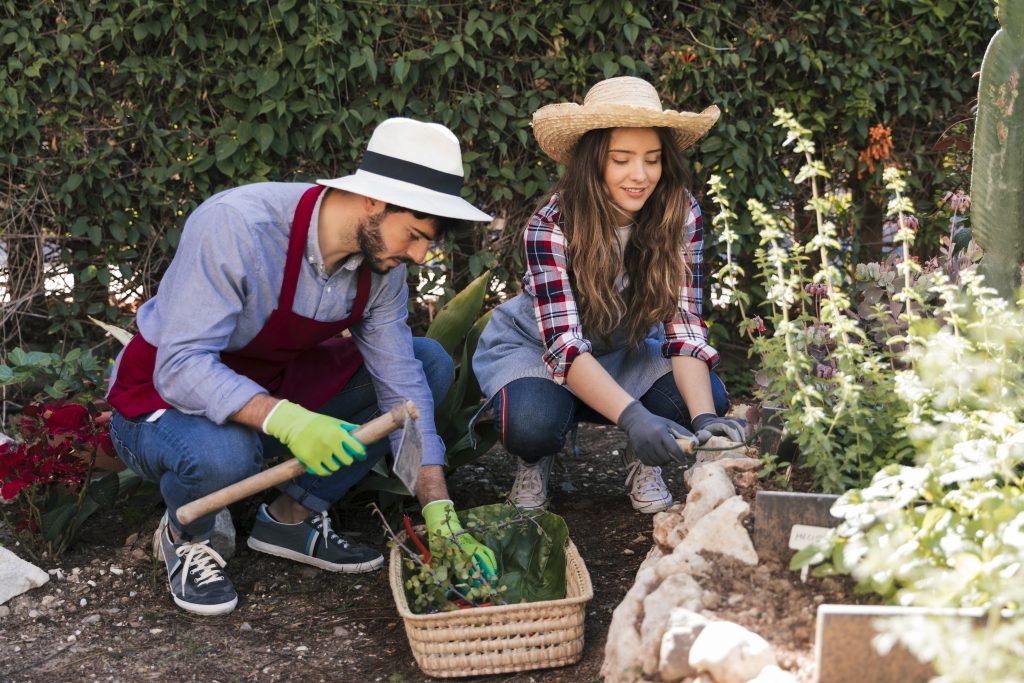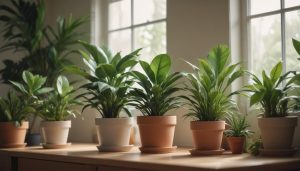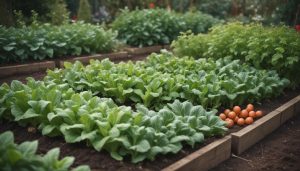Best Gardening Practices for First-Time Gardeners
Daniel Fisher August 12, 2025
Gardening can be a highly rewarding hobby, offering fresh air, physical activity, and a sense of accomplishment. Whether you’re growing flowers, herbs, or vegetables, the act of nurturing plants from seed to full bloom can be deeply satisfying. For first-time gardeners, however, it may seem like a daunting task. From choosing the right plants to understanding soil types, it’s easy to feel overwhelmed. But with a little guidance and planning, you can create a beautiful and thriving garden.
This article will explore some of the best gardening practices for beginners, focusing on easy-to-follow advice to ensure a successful gardening experience. Whether you’re cultivating a small balcony garden or a larger backyard plot, this guide is designed to help you build confidence as you start your gardening journey.

1. Start Small and Choose the Right Plants
When starting your garden, it’s important to avoid biting off more than you can chew. First-time gardeners should start with a small garden bed or a few containers. This allows you to learn the basics without feeling overwhelmed. As you gain experience and confidence, you can gradually expand your garden.
Another critical decision for beginners is choosing the right plants. Not all plants are suitable for beginners, and selecting the wrong ones can lead to frustration. Some easy-to-grow options for first-time gardeners include:
- Herbs: Basil, mint, and rosemary are great for beginners and don’t require much maintenance.
- Flowers: Sunflowers, marigolds, and zinnias are vibrant and resilient flowers that are simple to grow.
- Vegetables: Lettuce, spinach, and tomatoes are relatively easy vegetables to grow and can be planted in pots or raised beds.
Consider your climate and growing zone when choosing plants. Research plants that thrive in your area to ensure that your garden is suited to your environment. Local garden centers can provide recommendations based on your specific location.
2. Understand Your Soil
Soil is the foundation of any garden, and understanding your soil type is essential for healthy plant growth. There are three main types of soil:
- Clay: Clay soil is dense and retains moisture, but it can be difficult for plant roots to penetrate.
- Sandy: Sandy soil drains quickly but lacks nutrients.
- Loamy: Loamy soil is a balanced mix of sand, silt, and clay, and it’s considered ideal for most plants.
Before planting, it’s a good idea to test your soil’s pH and nutrient levels. Most garden centers offer soil testing kits, which will help you understand what your soil may be lacking. If your soil is too acidic or too alkaline, you can amend it with compost, lime, or sulfur to improve plant growth.
Adding organic matter, such as compost or aged manure, can also help improve soil structure and provide essential nutrients to your plants. If you’re gardening in pots, use a high-quality potting mix designed for the specific plants you plan to grow.
3. Watering Wisely
Watering is one of the most crucial aspects of gardening. While it may seem straightforward, many first-time gardeners struggle with watering too much or too little. Overwatering can lead to root rot, while underwatering can cause plants to wilt and die.
A general rule of thumb is to water deeply and infrequently. This encourages plants to develop deep, strong roots. Watering in the morning is ideal because it allows the plants to dry off before the cooler nighttime temperatures set in, reducing the risk of fungal diseases.
For potted plants, ensure that your containers have proper drainage holes. If the water collects at the bottom of the pot, it can suffocate the roots and cause your plants to die.
4. Use Mulch to Retain Moisture and Suppress Weeds
Mulch is a gardener’s best friend. Applying a layer of mulch around your plants can help retain moisture, regulate soil temperature, and suppress weeds. Organic mulches, such as wood chips or straw, break down over time and enrich the soil with nutrients.
A 2-3 inch layer of mulch around your plants is sufficient to reap the benefits. Be sure to keep mulch away from the base of the plants to avoid creating a damp environment that could encourage rot.
5. Regularly Maintain Your Garden
Regular maintenance is key to keeping your garden healthy. This includes:
- Weeding: Weeds compete with your plants for nutrients and water. Keep an eye on your garden and pull weeds as soon as you notice them.
- Pruning: Remove dead or diseased plant material to encourage healthy growth and improve air circulation.
- Fertilizing: Plants need nutrients to grow strong and vibrant. Depending on the type of plants you’re growing, you may need to apply a balanced fertilizer every few weeks during the growing season.
Make time each week to inspect your plants for signs of pests or diseases. Early detection can save your plants from severe damage and help you address issues before they become widespread.
6. Learn from Mistakes and Stay Patient
Gardening is a learning process, and it’s important to be patient. Your first garden may not be perfect, and that’s okay! Mistakes are part of the journey, and every error is an opportunity to learn and improve your skills.
Keep a gardening journal to track your progress. Note what plants are thriving, what problems you encountered, and what solutions worked for you. This can be a valuable resource as you continue to grow your garden.
7. Embrace Sustainable Gardening Practices
As you become more comfortable with gardening, consider incorporating sustainable practices into your routine. These methods can help reduce your environmental impact and promote a healthier garden. Some ways to garden sustainably include:
- Composting: Composting kitchen scraps and yard waste reduces landfill waste and provides nutrient-rich soil for your garden.
- Rainwater harvesting: Collecting rainwater in barrels to water your garden can reduce your water usage and save you money.
- Choosing native plants: Native plants are adapted to your local environment and require less water and maintenance.
By adopting these eco-friendly practices, you can create a garden that’s not only beautiful but also beneficial to the environment.
Conclusion
Gardening for beginners doesn’t have to be overwhelming. By starting small, choosing the right plants, understanding your soil, and staying patient, you can create a garden that’s both thriving and enjoyable. Remember, every gardener started somewhere, and with practice and persistence, you’ll soon find yourself reaping the rewards of your hard work. Whether you’re growing flowers, vegetables, or herbs, the joy of seeing your plants flourish is an experience worth the effort.
References
- Woodward, J. (2017). The Gardener’s Guide to Growing Herbs. Timber Press. Available at: https://www.amazon.com (Accessed: 12 August 2025).
- United States Department of Agriculture (USDA). (2021). “Soil Health Management.” Available at: https://www.nrcs.usda.gov (Accessed: 12 August 2025).
- The Old Farmer’s Almanac. (2021). “The Best Way to Water Plants.” Available at: https://www.almanac.com (Accessed: 12 August 2025).







